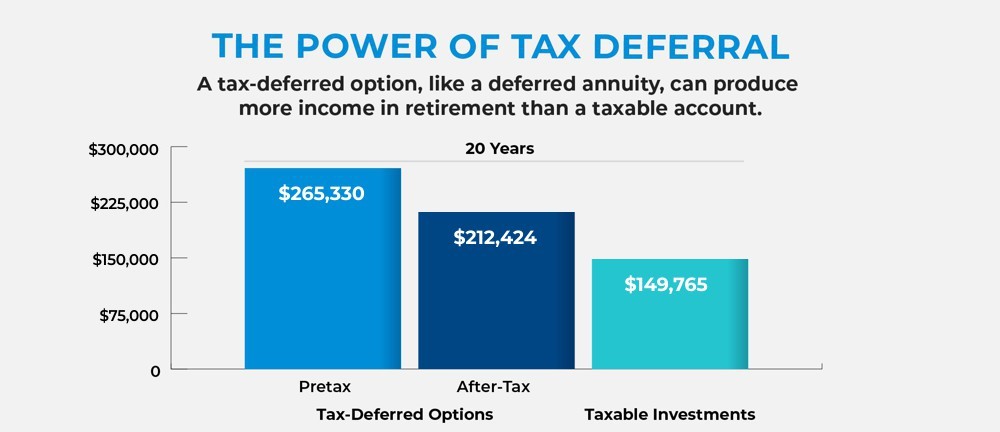All Categories
Featured
Table of Contents

Recognizing the different survivor benefit alternatives within your inherited annuity is vital. Very carefully evaluate the contract details or speak to an economic advisor to determine the certain terms and the most effective method to continue with your inheritance. As soon as you inherit an annuity, you have a number of choices for getting the cash.
In many cases, you could be able to roll the annuity into a special kind of individual retired life account (INDIVIDUAL RETIREMENT ACCOUNT). You can choose to get the entire continuing to be equilibrium of the annuity in a single settlement. This alternative offers prompt access to the funds yet features major tax repercussions.

If the acquired annuity is a qualified annuity (that is, it's held within a tax-advantaged retirement account), you could be able to roll it over right into a new retired life account (Multi-year guaranteed annuities). You don't need to pay tax obligations on the rolled over quantity.
How are beneficiaries taxed on Annuity Payouts
While you can not make added contributions to the account, an inherited Individual retirement account provides a useful benefit: Tax-deferred growth. When you do take withdrawals, you'll report annuity earnings in the very same method the plan participant would have reported it, according to the IRS.
This choice gives a consistent stream of revenue, which can be helpful for long-term financial planning. There are various payout choices offered. Normally, you must start taking circulations no greater than one year after the owner's fatality. The minimum quantity you're required to take out each year afterwards will be based upon your own life span.

As a beneficiary, you will not be subject to the 10 percent IRS very early withdrawal charge if you're under age 59. Attempting to compute taxes on an acquired annuity can really feel intricate, however the core principle focuses on whether the contributed funds were formerly taxed.: These annuities are moneyed with after-tax dollars, so the recipient usually doesn't owe taxes on the initial contributions, yet any profits gathered within the account that are dispersed go through normal earnings tax.
Tax treatment of inherited Annuity Withdrawal Options
There are exemptions for spouses that inherit qualified annuities. They can typically roll the funds right into their own individual retirement account and delay tax obligations on future withdrawals. In either case, at the end of the year the annuity company will certainly submit a Form 1099-R that demonstrates how a lot, if any type of, of that tax year's distribution is taxed.
These taxes target the deceased's total estate, not just the annuity. These taxes commonly only influence extremely huge estates, so for many successors, the focus needs to be on the revenue tax obligation implications of the annuity.
Annuity Fees inheritance and taxes explained
Tax Treatment Upon Fatality The tax therapy of an annuity's death and survivor advantages is can be rather complicated. Upon a contractholder's (or annuitant's) fatality, the annuity may go through both earnings tax and estate tax obligations. There are various tax obligation treatments depending on that the beneficiary is, whether the owner annuitized the account, the payout technique picked by the recipient, and so on.
Estate Tax The federal inheritance tax is a very dynamic tax obligation (there are lots of tax obligation braces, each with a greater price) with rates as high as 55% for very huge estates. Upon death, the internal revenue service will certainly include all property over which the decedent had control at the time of death.
Any kind of tax in unwanted of the unified credit scores is due and payable nine months after the decedent's fatality. The unified credit history will completely shelter fairly modest estates from this tax obligation.
This discussion will certainly concentrate on the inheritance tax therapy of annuities. As was the situation throughout the contractholder's life time, the internal revenue service makes an essential distinction in between annuities held by a decedent that remain in the buildup stage and those that have gotten in the annuity (or payout) stage. If the annuity is in the accumulation phase, i.e., the decedent has actually not yet annuitized the contract; the full death advantage ensured by the contract (including any type of boosted fatality advantages) will be consisted of in the taxable estate.
Inherited Annuity Payouts tax liability
Example 1: Dorothy possessed a fixed annuity agreement issued by ABC Annuity Company at the time of her death. When she annuitized the contract twelve years ago, she selected a life annuity with 15-year duration certain. The annuity has actually been paying her $1,200 monthly. Because the agreement guarantees settlements for a minimum of 15 years, this leaves three years of settlements to be made to her child, Ron, her marked beneficiary (Annuity beneficiary).

That value will be consisted of in Dorothy's estate for tax obligation functions. Presume instead, that Dorothy annuitized this contract 18 years earlier. At the time of her death she had outlasted the 15-year duration certain. Upon her fatality, the repayments quit-- there is nothing to be paid to Ron, so there is nothing to consist of in her estate.
Two years ago he annuitized the account choosing a lifetime with money refund payment choice, calling his daughter Cindy as beneficiary. At the time of his fatality, there was $40,000 principal continuing to be in the contract. XYZ will pay Cindy the $40,000 and Ed's administrator will certainly consist of that quantity on Ed's inheritance tax return.
Given That Geraldine and Miles were wed, the benefits payable to Geraldine stand for home passing to a surviving spouse. Long-term annuities. The estate will be able to utilize the limitless marital reduction to prevent taxation of these annuity benefits (the worth of the benefits will be noted on the estate tax obligation form, together with a balancing out marital reduction)
Annuity Payouts inheritance tax rules
In this instance, Miles' estate would certainly consist of the worth of the staying annuity payments, however there would be no marriage deduction to counter that addition. The same would use if this were Gerald and Miles, a same-sex couple. Please note that the annuity's continuing to be worth is established at the time of fatality.

Annuity agreements can be either "annuitant-driven" or "owner-driven". These terms describe whose death will certainly cause repayment of death advantages. if the contract pays death advantages upon the fatality of the annuitant, it is an annuitant-driven contract. If the fatality benefit is payable upon the fatality of the contractholder, it is an owner-driven contract.
There are situations in which one person has the contract, and the determining life (the annuitant) is someone else. It would be great to believe that a certain agreement is either owner-driven or annuitant-driven, yet it is not that simple. All annuity contracts provided since January 18, 1985 are owner-driven because no annuity contracts provided ever since will certainly be provided tax-deferred condition unless it has language that causes a payment upon the contractholder's fatality.
Table of Contents
Latest Posts
Highlighting the Key Features of Long-Term Investments Key Insights on Tax Benefits Of Fixed Vs Variable Annuities Defining Variable Annuities Vs Fixed Annuities Advantages and Disadvantages of Differ
Breaking Down Fixed Annuity Vs Equity-linked Variable Annuity Everything You Need to Know About Annuities Fixed Vs Variable What Is the Best Retirement Option? Benefits of What Is A Variable Annuity V
Decoding How Investment Plans Work A Comprehensive Guide to Investment Choices Defining the Right Financial Strategy Benefits of Choosing the Right Financial Plan Why Choosing the Right Financial Stra
More
Latest Posts